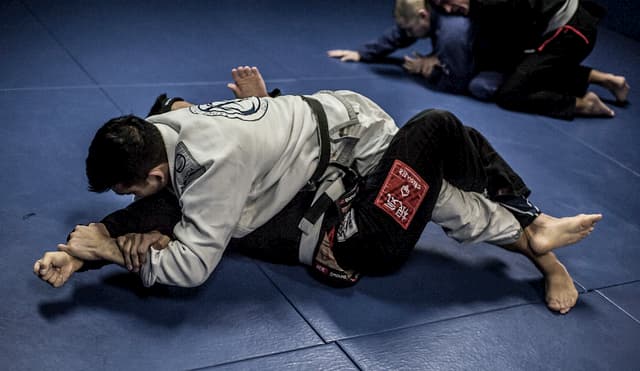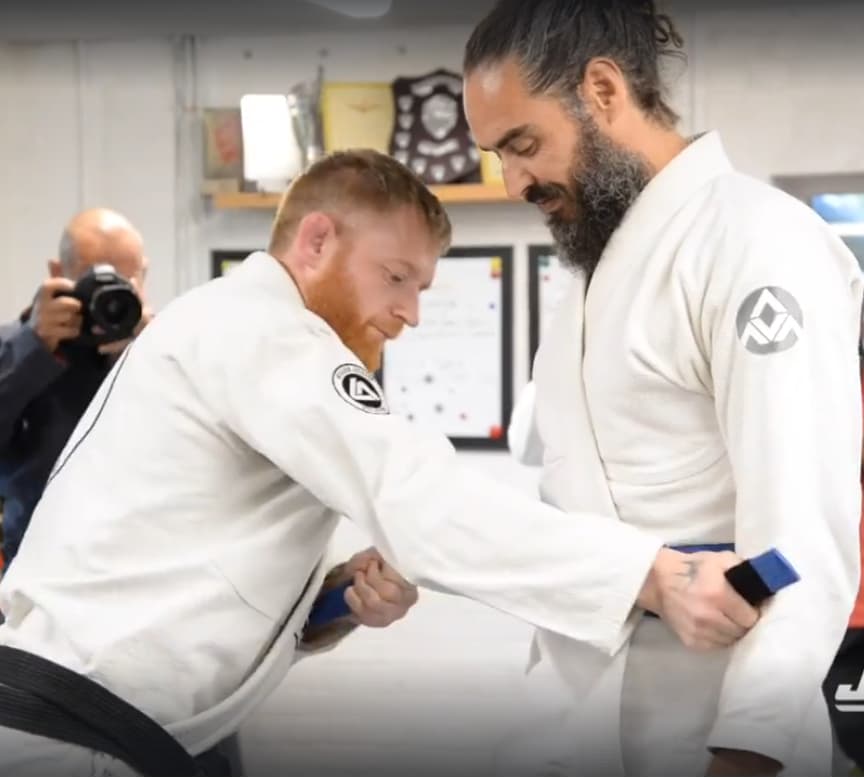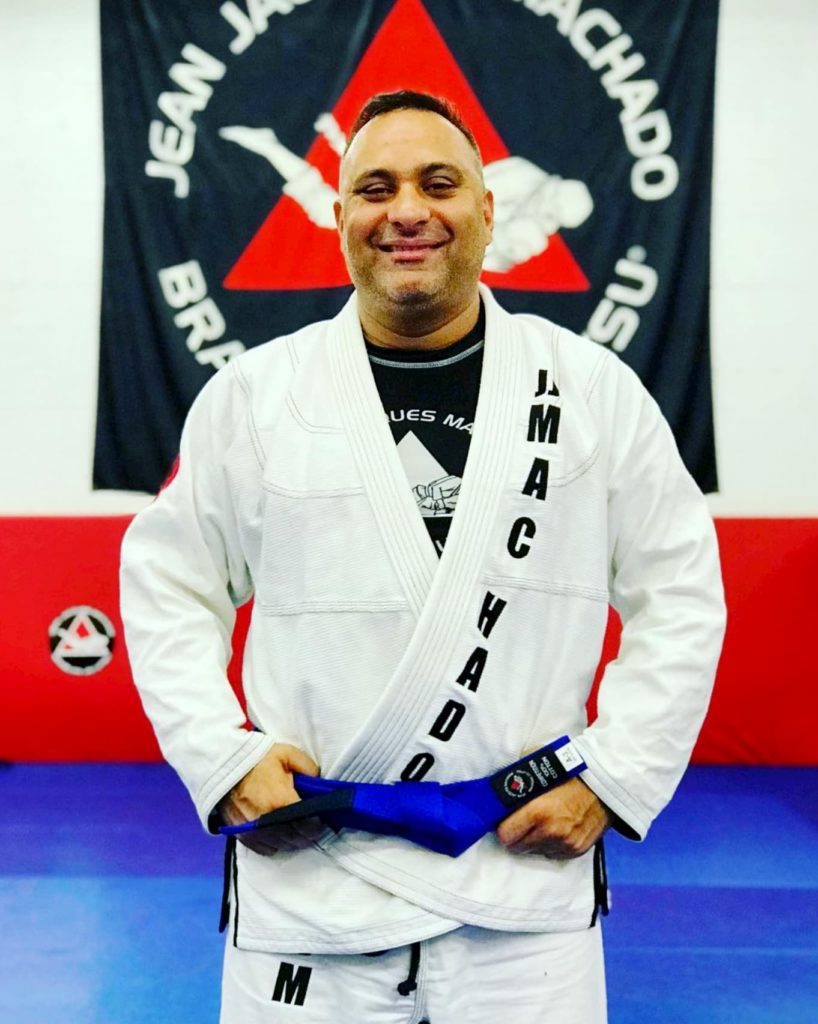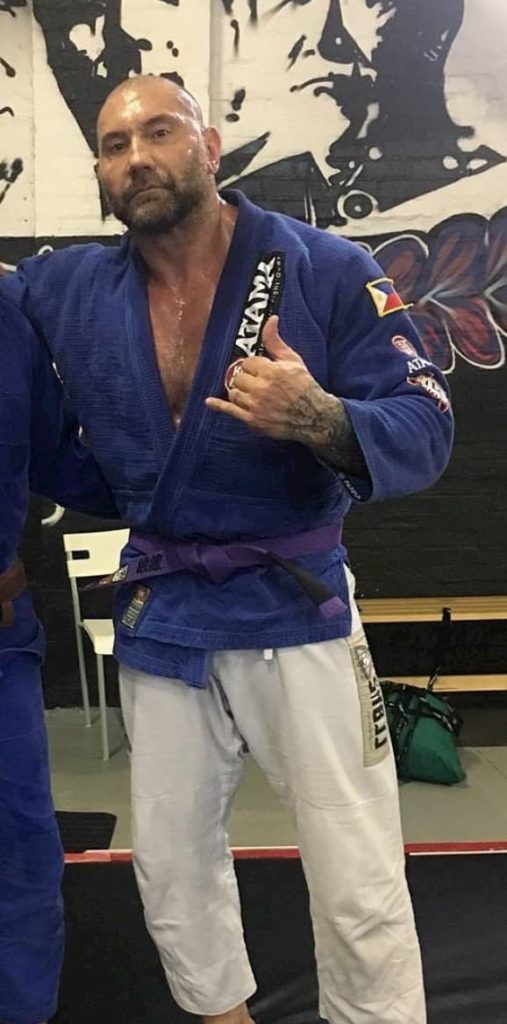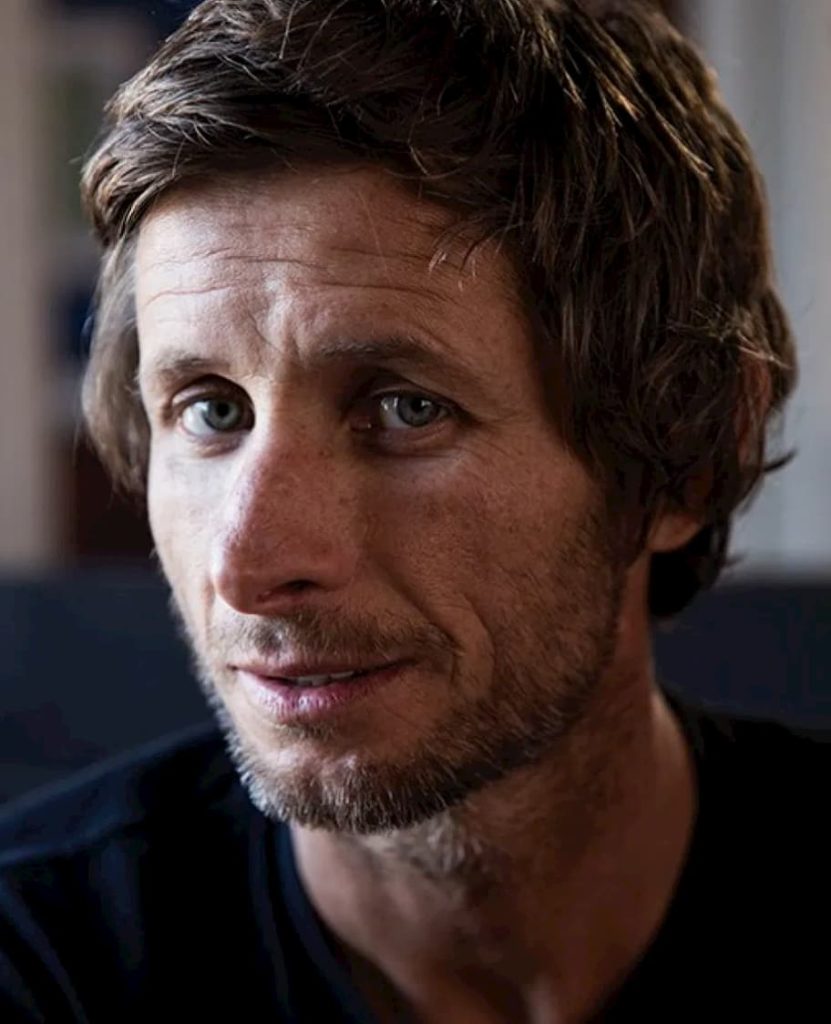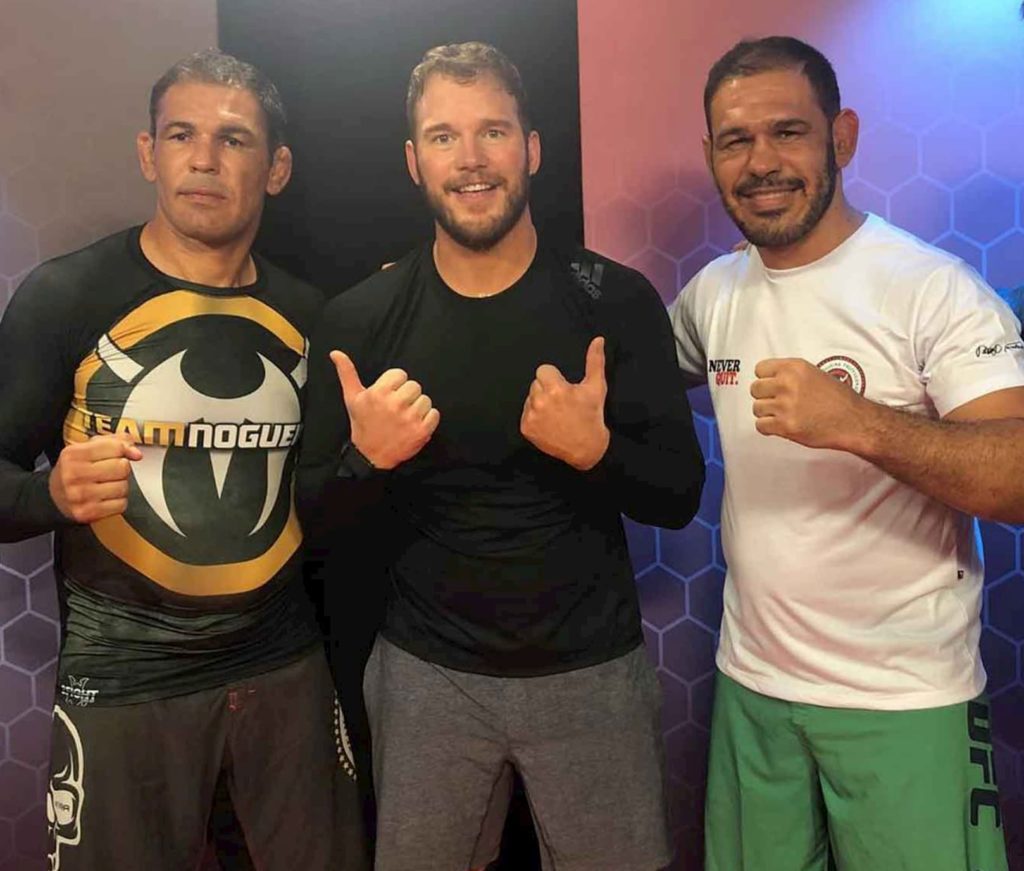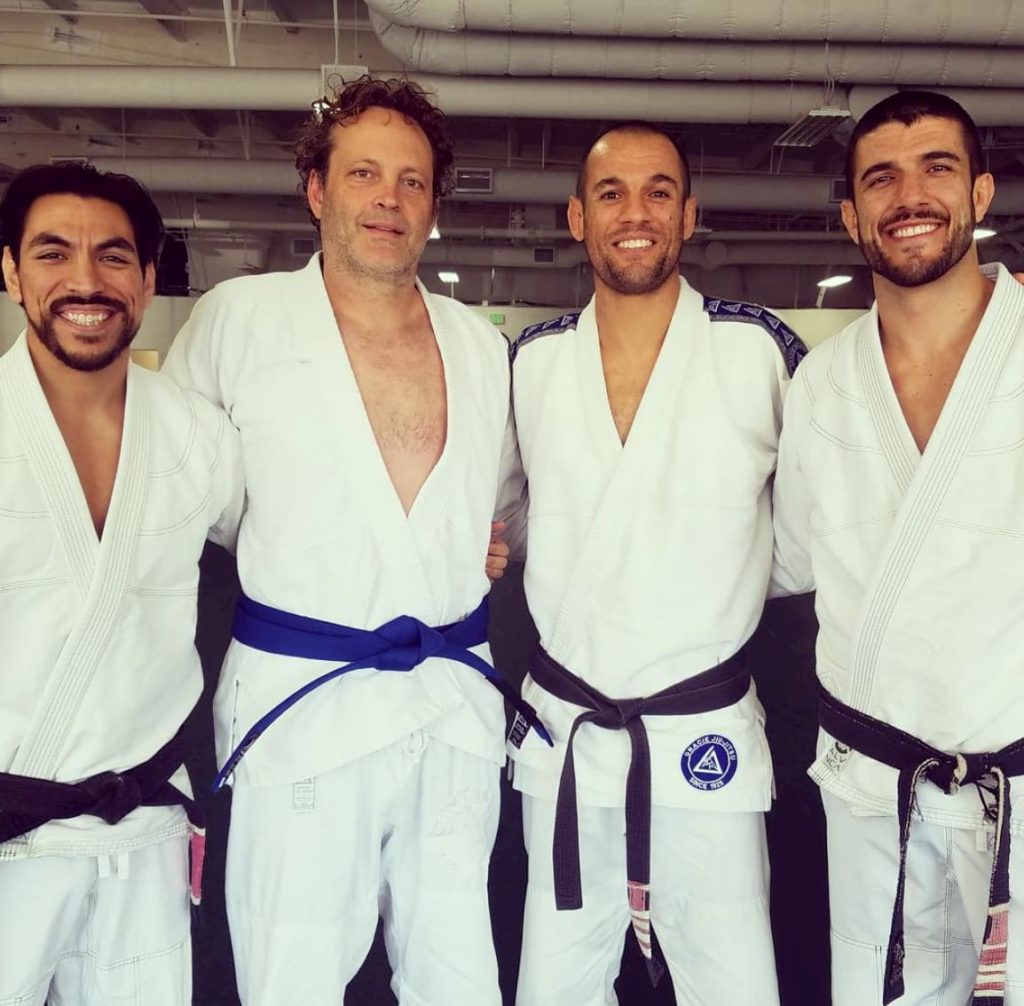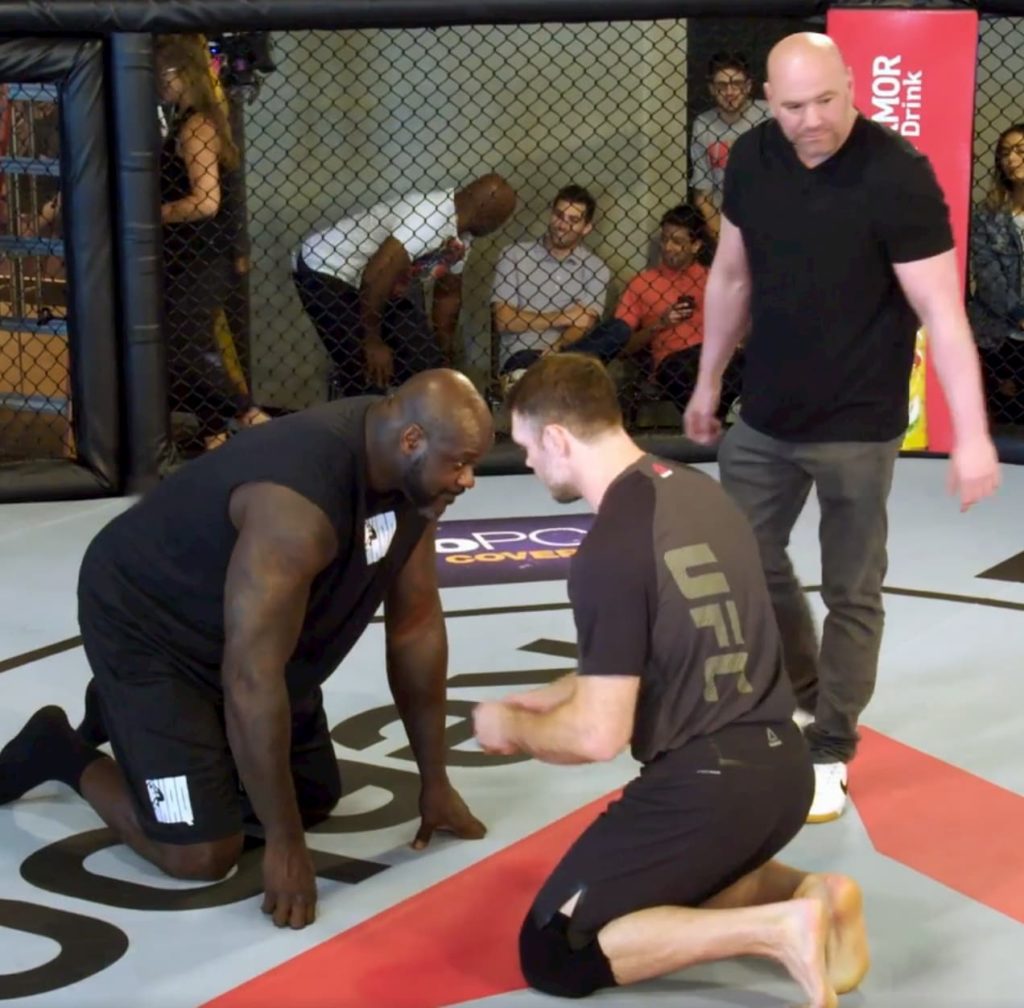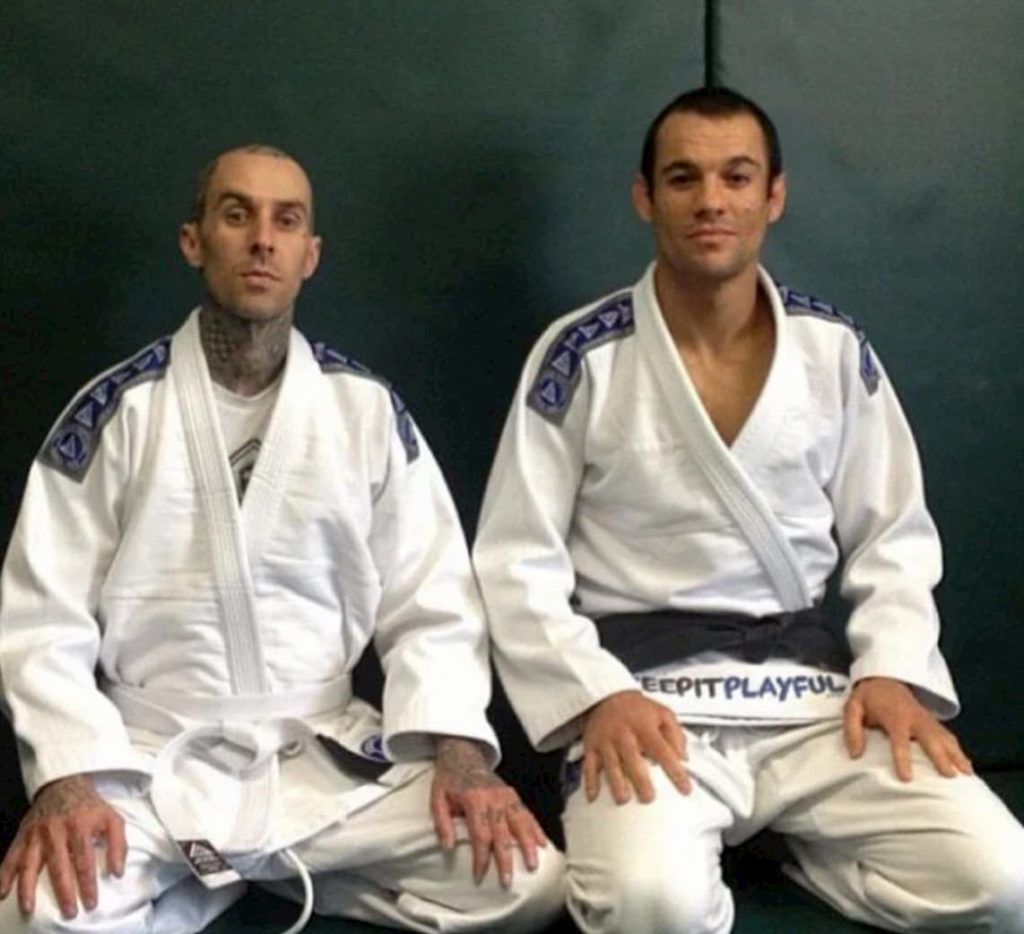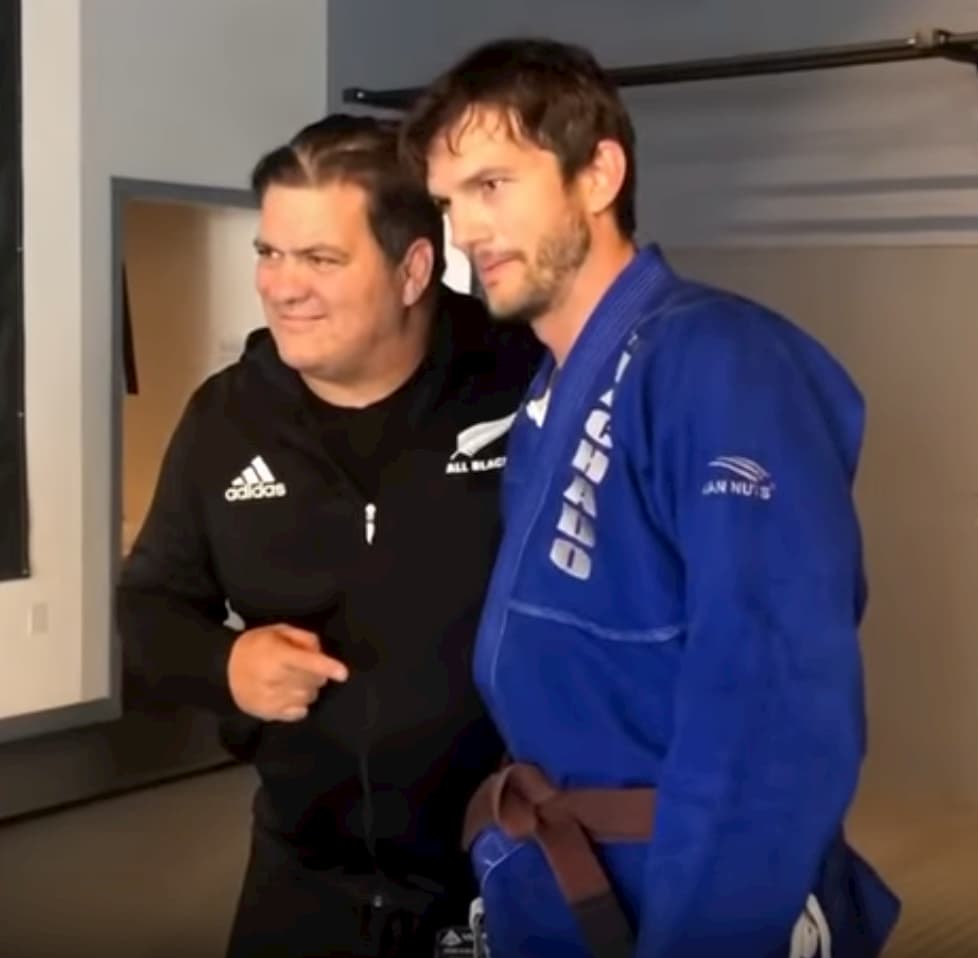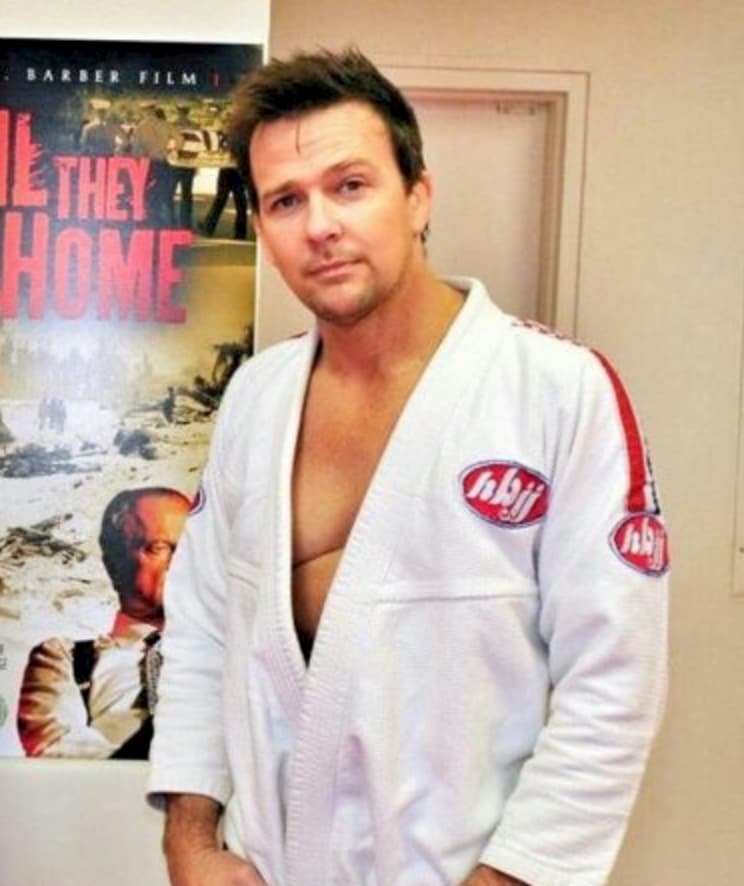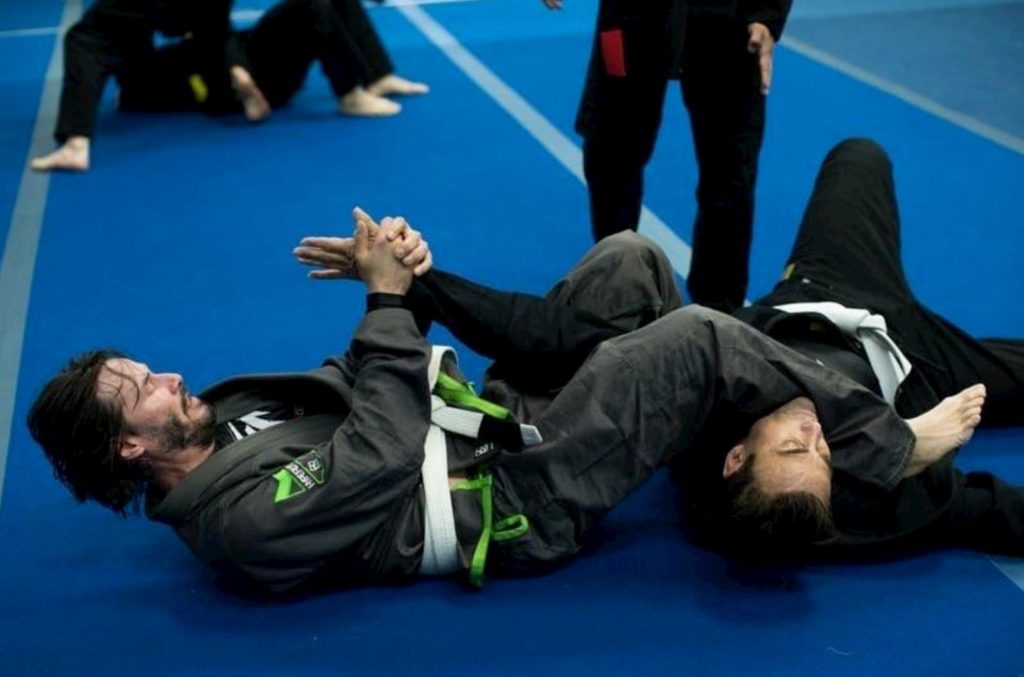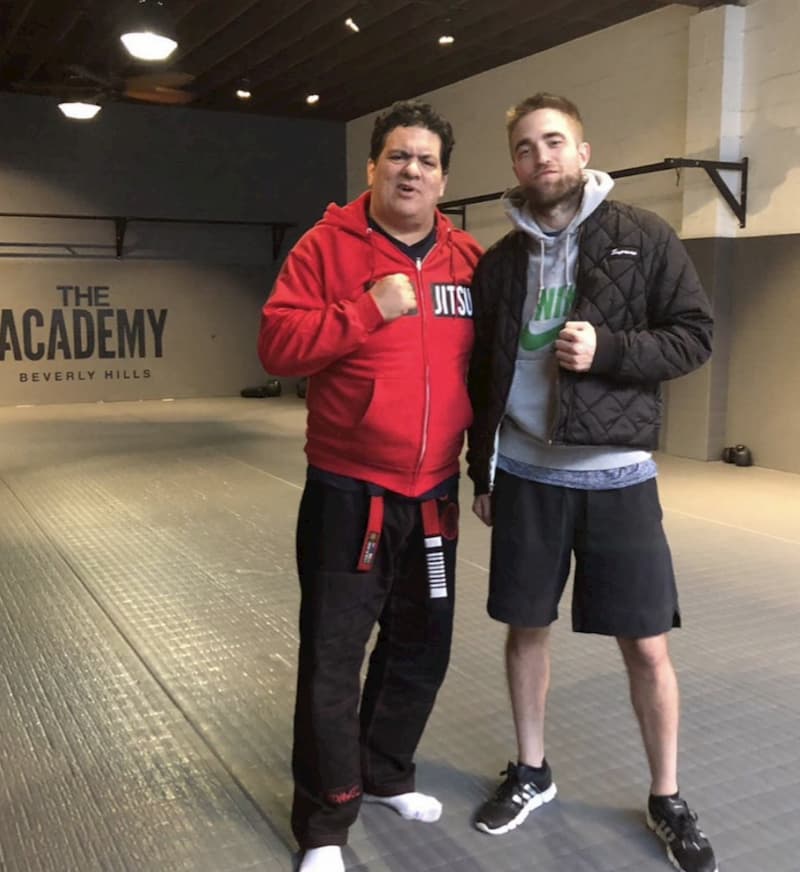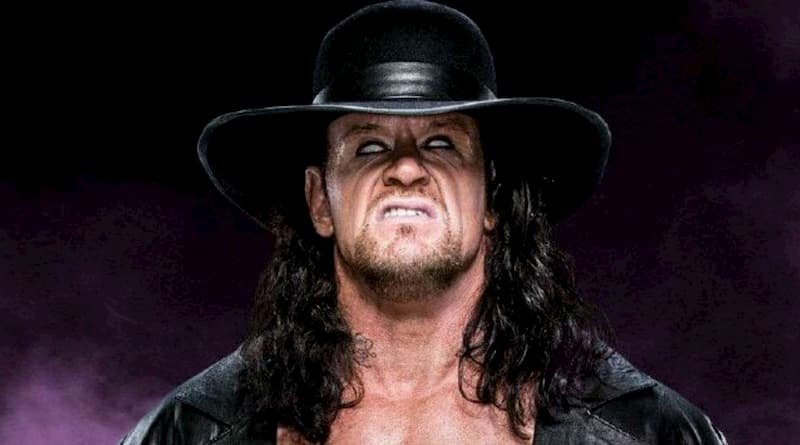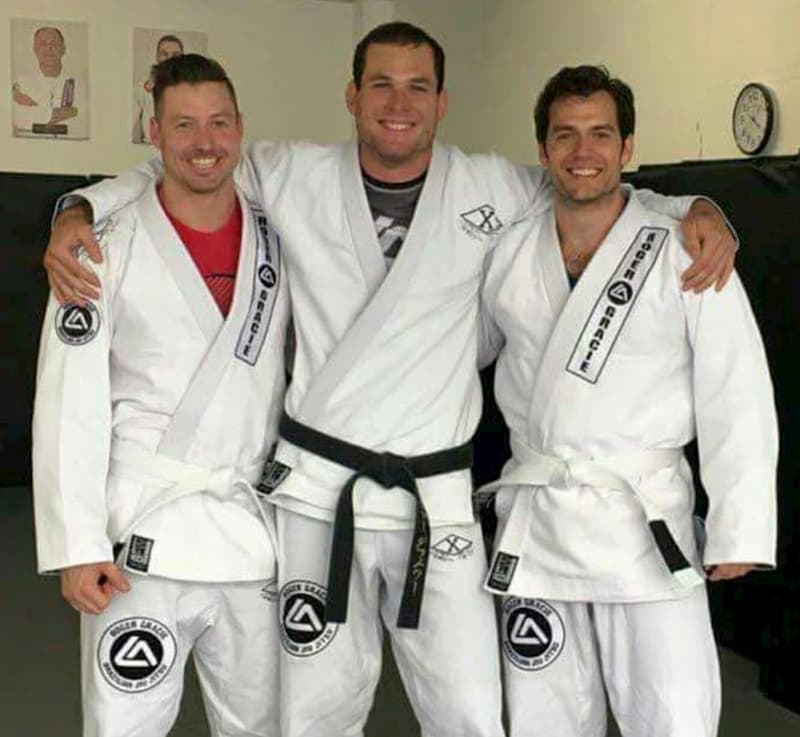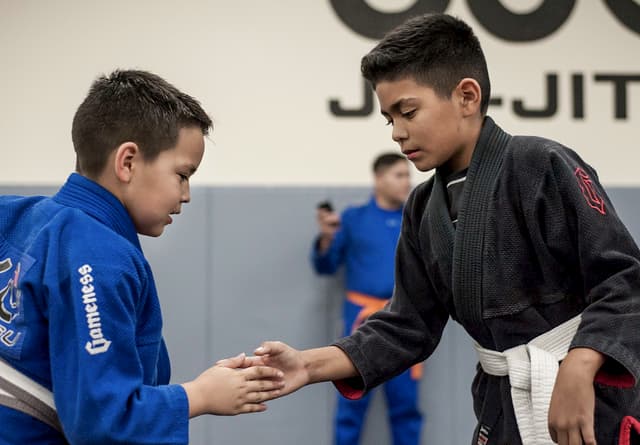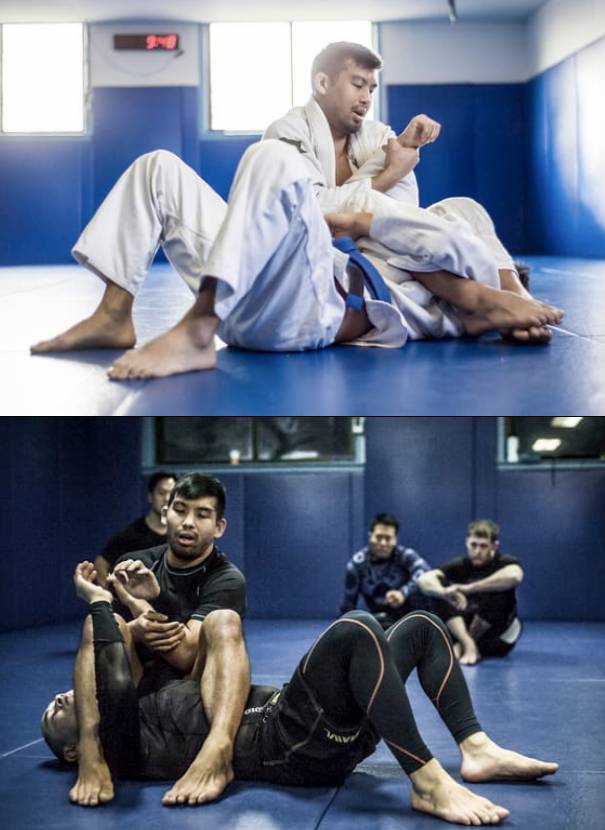Brazilian jiu jitsu has exploded in popularity over the last decade with the rise of UFC and mixed martial arts as mainstream sports.
But Jiu Jitsu is one of the world’s oldest sports, tracing its origins all the way back to the Japanese samurai. The samurai developed the grappling technique as a means of last resort if they were ever left on foot in the middle of a battle.
These ancient warriors fought in heavy armor that restricted their movements, so they developed a different style of hand-to-hand combat that emphasized chokes, holds, and throws over striking.
Jiu Jitsu, in its current form, is an offshoot of judo that made its way across the Pacific Ocean to South America during a wave of immigration during the early 1900s.
Brazilian Jiu Jitsu, as we know it today, was popularized by the Gracie brothers, Carlos and Helio, in Rio de Janeiro in the 1920s and quickly took off across the globe.
The sport prizes strategy and technique over pure fighting ability, making it one of the fairest competitive sports. Grapplers of any size still have a fighting chance in Jiu Jitsu.
Is Jiu Jitsu in the Olympics? As the popularity of BJJ continues to surge, the question of it’s status as an official Olympic sport continues to be raised. It’s a good question given the popularity of the sport worldwide and the inclusion of judo, karate, and taekwondo in the games, but the answer is still no Jiu Jitsu is not an Olympic sport.
Despite the exponential rise in participants and interest in the sport across the globe, there are still plenty of hurdles to getting the “gentle art” in the Olympics.
Why can’t BJJ make it in the Olympics?
Unfortunately, there are several significant reasons that it will be a long time before Brazilian Jiu Jitsu makes its debut on the world stage at the Olympics.
There is interest from fans and fighters alike, but the sport as a whole has not done much to make progress on the steps that would grant it legitimacy in the eyes of the IOC (International Olympic Committee).
So, what’s holding BJJ back from becoming an official Olympic sport?
The IOC requires any sport included in the Olympics to have an official governing body. Track and field, for example, is governed by World Athletics.
The International Judo Federation gives that sport legitimacy. Jiu Jitsu has several big organizations and franchises that hold tournaments, but none act as an official governing body of the sport.
The biggest BJJ competitions are run by the International Brazilian Jiu Jitsu Federation (IBJJF), the Abu Dhabi Combat Club (ADCC), Abu Dhabi Pro, and the Jiu Jitsu Federation.
Other smaller tournament promotions like Naga, Grappling Industries, and Jiu Jitsu World League all have minor differences in their rules. Not to mention the invitational BJJ super fight promotions such as Eddie Bravo Invitational and Fight 2 Win, plus Combat Jiu Jitsu.
All of these organizations and promotions have different strikes against them in the eyes of the IOC.
No Governing Body
Perhaps the biggest issue holding BJJ back from any Olympic aspirations are the different rules and for-profit nature of the different tournament organizers.
The ADCC and Abu Dhabi Pro are ruled out because they are run by the government of the United Arab Emirates. The Gracie family still has its hand in the IBJJF and Jiu Jitsu Federation and does not have an elected board of governors.
That’s a big no-no in the eyes of the IOC, which requires all governing bodies to be independent and not for profit.
Too Many Different Rules
BJJ, as an Olympic sport is the complicated and confusing rules of competition. Some may have a vision in their head of UFC or MMA stars duking it out for gold medals. But the real sport of Brazilian Jiu Jitsu is far from what goes down in the Octagon.
Many BJJ matches are not exciting to watch, as fighters elect to stall to maximize their point totals. The IBJJF has what some would consider watered down the rules around leg locks, slamming, and knee reaping, among some other things that aren’t allowed.
The combat sports already in the Olympics, like wrestling and judo, have already been forced to change their rules to stay relevant and included in the Games.
Jiu Jitsu is even further off when it comes to putting on a compelling display that would bring in eyeballs from all over the world.
Jiu Jitsu Needs Better Anti-Doping Rules
In addition to the lack of a governing body and standard set of rules, Jiu Jitsu continues to struggle to get doping protocols and testing under control.
BJJ made some progress by agreeing to test the winners of the black belt competitions at Pan Am and World Championships, but even that falls short of meeting the World Anti-Doping Agencies policies, which is a requirement for inclusion in the Olympics.
Yes, there has been progress made towards cleaning up Jiu Jitsu from a doping standpoint. But until there is consistent out-of-competition testing, there will always be a black cloud of suspicion looming over the sport.
There is one significant benefit that would come with a jump to Olympic competition for BJJ, and that’s a strictly enforced drug testing protocol.
The various federations have taken some baby steps toward rooting out dopers and cheaters from the sport, but the IOC and WADA would ratchet up the pressure to an even higher level.
A clean sport is crucial, and there is still work to be done when it comes to stamping out performance-enhancing drugs in BJJ.
This, however, is no reason to go all-in on the Olympics for BJJ. Every Olympic sport continues to deal with doping controversies.
Should Brazilian Jiu Jitsu change itself for the Olympics?
There has not been much traction towards making the types of changes necessary to bring BJJ into the Olympics. Even after the 2016 Games were held in Brazil, but that may not actually be a bad thing.
There are pros and cons for every niche sport that makes its way onto the Olympic docket – and let’s remember that most of the Olympic games fall far outside what qualifies as mainstream.
Being recognized by the Olympics provides some legitimacy to a niche sport, but at what cost? There is no guarantee that BJJ would experience a massive surge in global popularity by being included in the Olympics, but the sport would have to undergo a complete overhaul to get there.
Many judo fans feel very strongly that entering the realm of Olympic competition was one of the worst things to happen to the sport. The IOC forced judo to changes its rules and outlaw the more dangerous techniques and moves in order to be included.
Because of that, many old school Judoka believe the sport has been irreversibly changed for the worst without gaining much in return. BJJ is still a very young form of martial arts, and its art form is still very dynamic and evolving.
There is no reason to stunt that process by agreeing to a strict set of rules enforced by the Olympics.
Current Organizations Have Jiu Jitsu’s Best Interest In Mind
The sport of Jiu Jitsu remains headed by organizations and individuals who are incredibly passionate about the future and growth of the sport but also advancing the craft.
The Gracie family has played an enormous role in the growth of BJJ and has been there from the very beginning. They deserve to have an outsized role in the next generation of the sport.
Under the Olympic mantle, an elected board, perhaps more focused on driving profits and treating themselves to lavish vacations, might drive out the founding family of BJJ.
With a lot of discussion lately about Gracie Jiu Jitsu vs. Brazilian Jiu Jitsu and now we have Keenan Cornelius starting American Jiu Jitsu. Maybe separating Jiu Jitsu from the Gracie family name and having a combined governing body that has BJJ’s best interest in mind may help to eventually have it become an Olympia sport.
When could Jiu Jitsu make the cut?
Proposals were made to have BJJ added to the Paris 2024 Olympics but went nowhere.
The IOC elected to add break dancing, sport climbing, skateboarding, and surfing to the 2024 program but left Jiu Jitsu out in the cold.
For fans of the sport who feel strongly about getting it added to the Olympics, this might feel like a positive. All four sports added are very niche and were first taken mainstream by corporate backers without representative governing bodies.
Abu Dhabi’s UAEJJ Federation and the Ju-Jitsu International Federation made the strongest push to add Jiu Jitsu to the 2024 Olympics. They were backing their points with the fact that the sport was added to the 2018 Asian Games, which is recognized by the IOC as a major competition.
No-Gi grappling has a more durable case for inclusion in the Olympics because its matches are quicker and more exciting and would also bring in Judokas and wrestlers.
Check out our article Gi vs. No-Gi BJJ: Which One Is Better & Pros and Cons
Buzz will pick up again before the 2028 Olympics in Los Angeles, but it remains unlikely that BJJ will be included.
A blessing in disguise for BJJ
The debate around the Olympics boils down to one central point – does Brazilian Jiu Jitsu need the Olympics to continue growing? The answer to that question is a resounding NO!
The IOC has stringent rules and regulations governing every aspect of the event, especially advertisements and marketing. BJJ already has its own stars who are famous among the devoted fan base.
It does not need to be hemmed in by the rigidity of the IOC to chart its best path forward for sustained growth. Jiu jitsu is a sport best enjoyed without a strict rulebook.
It is an art form that must be given the freedom to evolve and grow on its own, led by the most passionate practitioners of the sport – not a governing body directed by the IOC on high.




